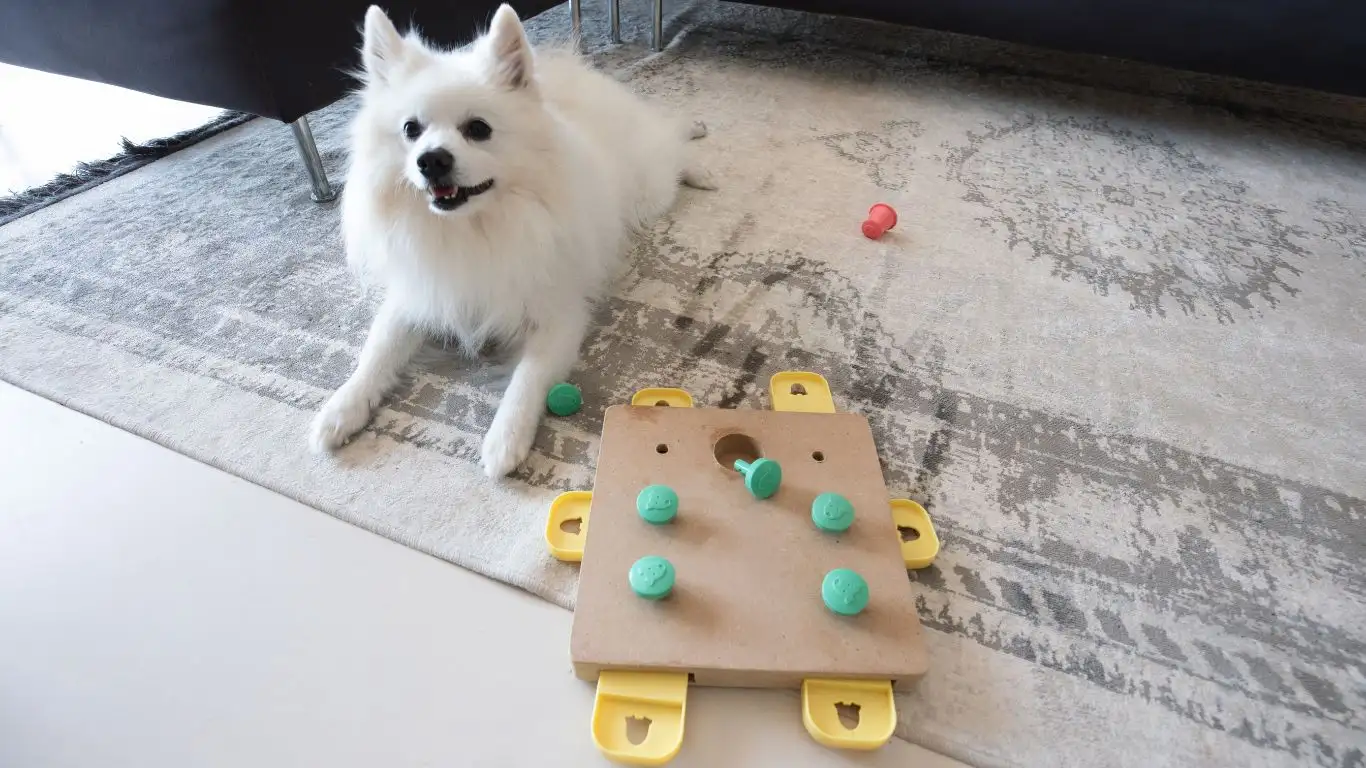Delicious GERD Friendly Slow Cooker Soups That Soothe
If you’re like me, juggling a full schedule with my work as a Canine-Assisted Therapy Trainer, the last thing I want to do after a busy day of training sessions is spend hours in the kitchen. That’s why I’m obsessed with GERD friendly slow cooker soups. They’re a lifesaver—not just for my time, but for my digestion too. If you’ve ever struggled with GERD (Gastroesophageal Reflux Disease), then you know how tricky it can be to find comforting meals that don’t come back to haunt you later. In this article, I’m dishing up my favorite tips, personal go-to soup ideas, and a few surprising tricks I’ve picked up along the way to make your slow cooker your new best friend. And yes, all without sacrificing flavor or triggering reflux!
Why GERD Friendly Slow Cooker Soups Are My Go-To

Let’s be real—dealing with GERD can feel like walking a tightrope. One wrong ingredient and boom—heartburn city. That’s where slow cooking comes in. It allows flavors to develop gently and keeps things easy on the stomach. Plus, soups are naturally hydrating and often packed with fiber-rich veggies that your gut will actually thank you for.
In my line of work, where I’m often moving from one therapy session to another, I rely on meals that are both nutrient-dense and low-maintenance. Tossing ingredients into a slow cooker before heading out to work with my therapy dogs means I come home to a warm, soothing bowl of goodness—no stress, no triggers.
What Makes a Soup GERD-Friendly?
First off, forget the usual suspects: tomatoes, garlic, onions, spicy peppers, and anything acidic or fatty. They’re a straight ticket to discomfort. But that doesn’t mean you’re stuck with bland, boring bowls. You just need to rethink your ingredients a bit.
- Low-acid veggies: Think zucchini, carrots, sweet potatoes, and green beans.
- Lean proteins: Skinless chicken breast, turkey, or lentils.
- Herbs over spice: Try basil, parsley, and thyme instead of chili flakes or cayenne.
- Gentle bases: Go for bone broth or veggie broth with no added tomato or onion extracts.
It’s not just about what you leave out—it’s also about how you layer flavor in a way that doesn’t irritate your system. I’ve learned this the hard way after trying to make “healthy” soups that still left me feeling like I swallowed a fireball.
How My Work With Therapy Dogs Influences My Cooking Style

Working with therapy dogs every day teaches you to be patient, consistent, and nurturing—qualities that I think translate beautifully into how I approach cooking. Just like building trust with a dog takes time and intention, so does building a soup that’s both healing and delicious.
After a long day of sessions, where I’m guiding both pups and people through emotional and physical growth, my body craves calm. A soothing bowl of soup not only resets my energy but feels like a form of self-care. Sometimes I even prep extra to share with my clients who are going through tough times—nothing says “I see you” quite like a homemade meal.
Kitchen Tips I’ve Picked Up Along the Way
Let me share a few of my secret weapons for making GERD-friendly soups that taste like comfort in a bowl:
- Use a liner in your slow cooker: It saves time on clean-up—trust me, your future self will thank you.
- Prep in batches: I usually chop extra veggies and freeze them in GERD-friendly combos so I can just dump and go.
- Test your broths: Not all “low sodium” or “organic” broths are created equal—some sneak in garlic or onion powder.
- Let it rest: Allowing the soup to cool a bit before eating can actually help reduce reflux symptoms.
There’s something about coming home to the smell of herbs wafting from the kitchen while your dog greets you at the door—tail wagging, eyes hopeful. Soup nights are my kind of therapy, and they’ve helped me stay healthy while managing both my own wellness and the emotional weight of my job.
Common Triggers to Avoid in GERD Friendly Slow Cooker Soups

Let’s talk pitfalls. Even seasoned soup lovers like me have made these mistakes, thinking “just a little bit won’t hurt.” Spoiler alert: it will. Here’s a quick list of ingredients I now leave off my grocery list entirely when I’m planning GERD-safe meals:
- Tomato paste and sauces – too acidic
- Onions and garlic – flavor bombs, but reflux nightmares
- Chili powder and cayenne – love spice, but GERD says no
- High-fat dairy – cream might taste rich, but it’s rough on the esophagus
My motto now? Flavor doesn’t have to burn. With the right balance of herbs, textures, and a bit of experimentation, your slow cooker can create soups that heal more than they hurt.
My Favorite GERD Friendly Slow Cooker Soup Recipes

Alright, now for the fun part—let’s talk actual recipes. Over the years, I’ve fine-tuned a few soup recipes that are not only GERD friendly slow cooker soups, but also pack flavor without flare-ups. These have become staples in my weekly meal rotation, especially after long days filled with canine therapy sessions.
1. Creamy Carrot & Ginger Soup (Without the Cream!)
This one’s a client favorite too. I once brought it to a therapy dog graduation ceremony (yes, those are a thing!) and everyone wanted the recipe.
- Ingredients: Carrots, zucchini, celery, ginger root, unsweetened coconut milk, veggie broth (onion- and garlic-free), thyme.
- Why it works: Ginger is a natural anti-inflammatory, and coconut milk adds creaminess without the reflux risk of dairy.
- Tip: Blend it smooth and serve with a slice of GERD-safe bread. Bonus points if your dog waits patiently for the crumbs.
2. Chicken & Quinoa Vegetable Stew
This one’s hearty enough for those colder days when I’m running between clients and just need something to stick to my ribs—but gently.
- Ingredients: Skinless chicken breast, chopped sweet potato, carrots, green beans, quinoa, low-sodium chicken broth (no garlic or onion), parsley.
- Why it works: Quinoa is high in protein and fiber without being too dense, and the veggies add a natural sweetness.
- Pro tip: Add a splash of oat milk right before serving for a creamier texture.
3. Zucchini & Basil Lentil Soup
This one brings the plant-based punch. It’s perfect for those “Meatless Mondays” when I’m giving both myself and my grocery budget a little break.
- Ingredients: Green lentils, chopped zucchini, carrots, celery, basil, bay leaf, and low-sodium vegetable broth.
- Why it works: Lentils are a great source of protein and fiber, and zucchini is gentle on sensitive stomachs.
- Pro tip: Let it slow-cook for 6-8 hours—lentils absorb all the flavor and break down into a velvety texture.
Meal Prep Magic for Busy Weeks

Between obedience classes and emotional support visits, my schedule can get unpredictable fast. That’s why I prep like a pro when I can. Here’s how I make sure my slow cooker soups are ready to roll even on my busiest days.
Batch Chopping Is a Game Changer
I usually block out one afternoon a week—typically Sundays—to chop up all my soup-ready veggies. I’ll divide them into freezer bags labeled by recipe. That way, all I have to do is dump them in the slow cooker, add broth, and let it do its thing.
And yes, I’ve had a few times when I had to run out the door in a rush because a therapy pup had a surprise behavioral hiccup. Those pre-prepped soup bags? Total lifesaver.
Double It, Freeze It
Every time I make a batch of soup, I double the recipe and freeze half in individual servings. I label the containers with the date and name, which has saved me from more “what’s in this mystery container?” moments than I can count. My freezer is basically a soup library at this point.
It’s also been a sweet little way to care for my clients—especially elderly or chronically ill ones. I’ll occasionally bring over a few frozen servings of my GERD-friendly soups after a therapy session. It’s a quiet way of saying “I care,” and it builds deeper connections beyond just the dog work.
Flavor Boosters That Don’t Trigger GERD

Okay, let’s talk about the real secret weapon of slow cooker soups—flavor. When you’re skipping garlic, onion, and spice, you’ve gotta get creative. Over the years, I’ve found a few safe, GERD-approved ways to pack in flavor that don’t come with the dreaded burn.
- Fresh herbs: Basil, thyme, and parsley are my go-tos. I toss them in at the beginning and then sprinkle fresh at the end too.
- Lemon zest (not juice): Adds brightness without the acid overload. Just a bit grated in makes a big difference.
- Turmeric: Anti-inflammatory and gently warming. Not for spice lovers, but still adds depth.
- Low-acid veggies: Roasting them beforehand gives that caramelized note without triggering reflux.
One day, after a particularly long training session with a very anxious rescue pup, I got home completely drained. I had a turmeric-laced lentil soup waiting for me in the slow cooker, and I swear, it felt like it gave me a hug. That’s what good food should do—nourish, comfort, and heal.
So whether you’re new to managing GERD or just want some easy, reliable meals that won’t trigger you, slow cooker soups are an absolute game changer. And trust me, if I can fit these into my unpredictable, dog-filled days, you totally can too.
Small Adjustments, Big Difference: How I Personalize GERD Friendly Slow Cooker Soups

By now, you’ve probably realized how obsessed I am with GERD friendly slow cooker soups. But the real magic happens when you start customizing these soups to your personal comfort level. GERD isn’t one-size-fits-all—what works great for me might need a tweak or two for you. And that’s okay. I’ve learned to treat this the same way I treat training a new therapy dog: patience, observation, and a little trial and error.
When I first started experimenting with slow cooker recipes to accommodate my GERD, I kept a simple food journal for a few weeks. Nothing fancy—just jotting down what I ate and how I felt afterward. That helped me figure out that even “safe” foods like broccoli needed to be in small amounts or blended smoothly to avoid discomfort.
My Quick Tips for Personalizing Your Soups
- Start small: Try just one new soup a week and see how your body responds.
- Switch up broths: If one brand gives you trouble, try making your own with gentle herbs and veggies.
- Blend or don’t: I love both creamy and chunky soups, but some days my digestion handles one better than the other. Listen to your gut—literally.
- Add after cooking: A splash of oat milk or fresh herbs stirred in after cooking can elevate flavor without irritating your stomach.
I once had a client who loved my carrot and ginger soup but found even coconut milk a bit rich. She swapped it with steamed mashed cauliflower, and it worked like a charm! The point is—don’t be afraid to experiment. You know your body best.
What to Pair With Your GERD Friendly Soups

Let’s not forget about the sidekicks. Just like no therapy session is complete without a cuddle break, no soup night feels totally satisfying without a little something on the side. Here are a few of my go-to pairings that keep things reflux-safe and comfort-heavy:
- Toasted sourdough bread: Surprisingly easier on the stomach than regular white bread, as long as it’s plain.
- Baked sweet potato rounds: Mild, filling, and naturally sweet.
- Steamed rice cakes with avocado: Skip the citrus and spicy seasoning—just a pinch of salt is perfect.
- Chamomile tea: Soothing, warm, and digestion-friendly—my end-of-day ritual, especially after evening sessions with my pups.
Sometimes, I’ll sit down with a bowl of soup, a slice of lightly toasted bread, my feet up, and my dog curled at my side. Those are the moments that make the chaos of the day melt away.
Keeping Your Kitchen GERD-Friendly
One more tip from my routine: keeping my kitchen stocked with reflux-friendly staples makes life so much easier. Here’s what I always keep around so I can whip up a slow cooker soup without a second thought:
- Pre-chopped frozen veggies (zucchini, carrots, green beans)
- Low-sodium, onion- and garlic-free broth
- Fresh and dried herbs like thyme, basil, and turmeric
- Plant-based milk (like oat or almond)
- Cooked grains or legumes frozen in small portions
This little system has saved me on days when I come home exhausted from a therapy training session that ran overtime or involved a new pup still learning the ropes. It’s all about setting yourself up for success—even when your energy’s low.
Final Thoughts from My Therapy Dog Life
If I’ve learned anything through years of working with dogs and supporting people through their healing journeys, it’s this: comfort and care matter. Whether it’s a well-trained therapy dog nudging your hand or a warm bowl of soup waiting for you after a long day, these small things add up.
Your body deserves kindness, and your meals should reflect that. GERD doesn’t mean giving up joy in food—it just means finding a new way to love what nourishes you. I hope these recipes, tips, and real-life experiences give you a starting point or inspire your own soothing soup adventures. Trust your gut—literally and figuratively—and find what works for your rhythm.
References
- American Gastroenterological Association
- Mayo Clinic
- Cleveland Clinic
- American Society for Nutrition
Disclaimer
This article is for informational purposes only and is not intended as medical advice. Always consult a licensed healthcare provider before making changes to your diet, especially if you have GERD or other medical conditions. My tips and experiences are personal and meant to inspire—not replace professional guidance.






